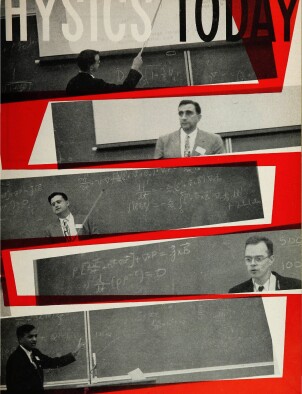The helium vapor‐pressure scale of temperatures
DOI: 10.1063/1.3062505
Since the Fourth International (Paris) Conference on Low‐Temperature Physics in 1955, precision low‐temperature research has been plagued by having two standard scales for temperature in the range 1 to 5.2 °K. These are the helium vapor‐pressure scales of J. R. Clement (the 55E Scale), and of H. van Dijk and M. Durieux (the L55 Scale). The differences between these scales (Fig. 1) are within the experimental uncertainties of the measurements on which the scales are based. A reliable decision as to which of these two scales is superior to the other calls for a study and reevaluation of all the data on which the scales are based. The original or raw experimental data from which published values for the vapor pressure, and calorimetric and state properties of helium were calculated should be recalculated using the present best values for physical constants and related properties of helium. The magnitude of this reevaluation may be better appreciated when it is realized that the temperature scales used by the original investigators are in error and have to be corrected for, but that these corrections cannot be determined until the ultimate objective, the standard scale, has been determined. This is a big, though possible, undertaking. There are real difficulties, however, because some investigators have not published sufficient data for a complete reevaluation of their work. Then the personal judgment of the reevaluator becomes important. Difficulties of this kind seemed to be blocking agreement of Clement and van Dijk on a single helium vapor‐pressure scale of temperatures.
This article is only available in PDF format
References
1. J. E. Kilpatrick, W. E. Keller, and E. F. Hammel, Phys. Rev. 97, 9 (1955).
2. J. Kistemaker and W. H. Keesom, Physica 12, 227 (1946), or Leiden Comm. 269b;
and J. Kistemaker, Physica 12, 272 (1946), or Leiden Comm. 269c.3. R. W. Hill and O. V. Lounasmaa, Phil. Mag. 2, 143 (1957).
4. R. Berman and C. Swenson, Phys. Rev. 95, 311 (1954).
More about the Authors
F. G. Brickwedde. Pennsylvania State University.




